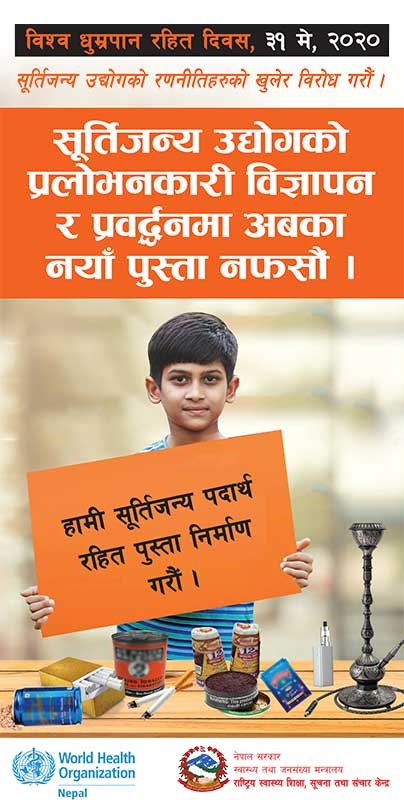An avid smoker of 10 cigarettes a day for 15 years, Ramesh (name changed) has not taken a puff for almost three months now. Common among most smokers, this is not the first time Ramesh has quit smoking. A resident of Kathmandu, Ramesh in the past pulled off a week or two without a cigarette. “The maximum I could stay off cigarettes was a month. Then one day, I would be at another get-together with friends and engrossed in yet another conversation, and before I knew it, I would have lit up a cigarette again?” shares Ramesh. “And you know, you just need some weird reason to resume a bad habit.”
But Ramesh has now quit smoking for good, and he has the COVID-19 pandemic to thank for it, as he tries to get some optimism back amid clouds of COVID-19 uncertainty.
“The pandemic has come as a blessing in disguise,” says Ramesh, in a relieved yet triumphant tone. A media person himself, Ramesh is an avid news watcher. In one of the recent COVID19 TV briefings, he heard the spokesperson of the Ministry of Health and Population Dr Bikash Devkota talk about the connection between smoking and COVID19. Ramesh remembers hearing reference to a WHO study too in that context. “When I read up WHO’s findings that smokers are at a higher risk of developing severe COVID-19 symptoms, compared to non-smokers, I was convinced that I had taken the right decision to quit smoking, that too at the right time.”
The pandemic is giving smokers like Ramesh more reasons and additional motivation to finally quit smoking. They want their lungs to be as healthy as possible in case they become infected with COVID-19.
The WHO statement substantiates those fears of smokers. “COVID-19 is an infectious disease that primarily attacks the lungs. Smoking impairs lung function, making it harder for the body to fight off coronaviruses and other diseases. Tobacco is also a major risk factor for non-communicable diseases like cardiovascular disease, cancer, respiratory disease and diabetes, which are also responsible for developing severe illness when affected by COVID-19. Available research suggests that smokers are at higher risk of developing severe disease and death,” reads the WHO statement.
When it comes to the pattern of tobacco consumption, the situation in Nepal is alarming.
According to the latest survey carried out by Nepal Health Research Council and the Government of Nepal with technical support from the WHO in 2019, 28.9 per cent adults (aged 15-69 years) use either smoked or smokeless tobacco products.
Tobacco use is high among men in Nepal, with nearly 50 per cent of men (aged 15-69 years) using tobacco (smoke and smokeless). The report adds one-third of the population at home, and two out of five at the workplace, are exposed to secondhand smoke.
One of the significant factors for the rising number of tobacco users is the tobacco industry’s strategic, aggressive and well-resourced tactics to attract youth to tobacco and nicotine products.

WHO is marking the World No Tobacco Day 2020 on May 31 to provide a counter-marketing campaign and empower young people to engage in the fight against Big Tobacco. The theme for this year is “Protecting youth from industry manipulation and preventing them from tobacco and nicotine use”.
The global campaign serves to debunk myths and expose manipulation tactics employed by the tobacco and related industries, particularly marketing tactics targeted at youth, including through the introduction of new and novel products, flavours and other attractive features.
* *
Author: Roshan S. Nepal
* *
Additional links:
Message by Bhanu Bhakta Dhakal, Minister of Health and Population, on World No Tobacco Day 2020 here.
Key messages on World No Tobacco Day 2020 here.
Read more on the Tobacco Free Initiative here.
